- Home
- Patrick Robinson
U.S.S. Seawolf am-4 Page 21
U.S.S. Seawolf am-4 Read online
Page 21
Of course, they did not all find more. Some collapsed, some hit a mental brick wall and just sat slumped on the ground, some just gave up, others did not really see the point. But when the dust cleared, there were a few men who still stood tall, chins out, shoulders back, eyes forward. Still defiant. Upon these few, these precious few, would be pinned the golden Trident badge of the U.S. Navy SEALs, the badge that sets them apart from all other combat troops in the United States Armed Forces.
The 21 SEALs who made the flight west from Little Creek to San Diego were a diverse and eclectic group, mostly veterans from every walk of life. Some had started in big-city tenements, others in wealthy suburban households. They were from the North and from the South, and they were black and they were white. And some were secretly scared, and others weren’t. But they were united in spirit, prepared if necessary to die for one another. They were SEALs. And that is unlike any other calling.
Lieutenant Commander Hunter sat up front next to a younger officer, 30-year-old Lt. Ray Schaeffer, a native of the Massachusetts seaport of Marblehead who had gone straight from high school to Annapolis. Ray was a real seaman, a superb swimmer, expert navigator, yachtsman, fisherman, and the platoon middleweight boxing champion. His family had lived in Marblehead for generations. His father, a local sea captain, lived in a medium-sized white colonial house down near the docks. In one corner of the living room was an ancient illustrated family tree that showed that a Schaeffer had pulled one of the oars when the men from Marblehead had rowed General Washington to safety after the lost Battle of Long Island.
Ray had served with Rick Hunter on the mission in Russia. They had been detailed to that operation as complete strangers, but they returned as lifelong friends, and everyone noticed. Plainly they had faced immense dangers together, and whatever had happened, it now bound them in mutual respect. When Lieutenant Commander Hunter had been asked to begin naming the SEALs he would take with him to Coronado, the first name he uttered was Lt. Ray Schaeffer.
Behind them sat Lt. Dan Conway from Connecticut, another graduate of the Naval Academy. The son of a Navy frigate captain, grandson of a World War II submariner, Dan understood the folklore of the underwater warriors, having lived in the old family home in New London all his life. A tall, dark-haired man of 29, he had risen rapidly through the ranks as a SEAL, and was within months of becoming a team leader.
A former high school all-star baseball catcher, he juggled his career options between Fenway Park and Annapolis. The Navy won in a tight finish, and his father approved the choice of a long-term profession in dark blue. His mother, however, almost had a heart attack when he announced he was going to join the SEALs.
Dan Conway was a born athlete, with wide shoulders and a right arm that could hurl a baseball to second base like a howitzer. In unarmed combat he learned to be a master. In armed combat exercises, well…stay well clear of his right hand if it happens to be holding one of the SEALs big fighting knives. In the relentless training of “Hell Week,” the physical endurance tests that break 50 percent of all applicants, Dan finished first.
He had been on the verge of collapse that day, sobbing for breath after the seven-mile beach run and the long swim in the Pacific. And he did not believe he could keep going for another five seconds, and one of the instructors ordered the remaining group to start running back to base. Two men went down, and returned on stretchers. Dan Conway drove himself forward, praying not to pass out. He threw up before they reached the gates, and when he got inside he fell onto the concrete. And another instructor stood over him and roared at him to get up, and go one more time through “the tunnel”—the huge flooded rowing boat, which required an underwater crawl under the seats.
Dan was gasping for air, his lungs throbbing, and the thought of going under the water for more than a minute was too much. And he shook his head, and he knew it was over…and then he got up, and drove himself through the tunnel, under the water, wriggling his way under the seats, tearing the skin on his knees, but still going forward. When he finally climbed over the gunwales, he blacked out and two instructors caught him as he fell. The last words he heard were, “Right here we got a real live Navy SEAL…”
Next to him sat Lt. Junior Grade Garrett Atkins from California. Garrett was two years younger than Dan, and had started his Navy career training to be a combat systems officer in a Los Angeles-class nuclear submarine. He was good at it, too, but Garrett was an outdoorsman, loved the beach, loved the mountains, drove all over the place in his Jeep Grand Cherokee, and grew to dislike the terrible confines of a big attack submarine.
Garrett was a tall, rather shy sportsman, an outstanding high school football player, and a baseball player. He wanted to leave the submarine service, but he did not want a soft option, and he decided to try something even tougher. They presented him with his golden Trident one year later, and he lived for the day when he would go into action with a SEAL combat platoon. It was a day not so very far off. Both he and his pal Conway sat in silence as they flew over the flat farmland of the Midwest, guessing that something big was about to break out.
Back in the main group were two outstanding petty officers, both experts at fighting in the mountains, both veterans of the Kosovo campaign seven years previous. From North Carolina came Catfish Jones — no one ever found out if he had a more formal name. Catfish came from a family that had lived in or around Morehead City for nine generations, right out there on the last mainland before the Outer Banks.
Catfish’s aunt owned a bookstore right opposite the marina, but he had never taken to that line of commerce. Instead he tried a career as a deck hand on a big fishing trawler, working the rough Atlantic waters out beyond the Shackleford Banks, which guard the shores of Carteret County. Just southeast of here, the banks abruptly turn northeast and rename themselves the Core Banks, sweeping narrowly for 80 miles past Ocracoke Island on up to the storm-tossed waters around the Cape Hatteras Lighthouse.
These are tough seas in which to make a living, and men drown out there every year. They were not, however, apparently rough enough for Catfish, a 28-year-old, fair-haired, blue-eyed bull of a man. He stood five feet ten inches tall, with a 19-inch neck, and he had the strength to have once lifted the rear of a sports car clean off the ground with his bare hands while his buddies changed the wheel, in the pouring rain, in the middle of the night.
Catfish had a group of friends at the Camp Lejeune Marine Corps base a few miles down the coast from Morehead, and before he was 49, he had retired from fishing and enrolled in the Corps. Eighteen months later he applied to join the SEALs and finished second in his intake group.
It was said he had a harrowing time fighting in the Kosovo mountains north of Pristina, alongside the man who now sat next to him, 30-year-old SEAL veteran Rocky Lamb, a black career serviceman from the Bronx who had joined the Navy immediately after leaving high school.
Catfish and Rocky had worked together in those mountains for three weeks. And shortly after the American aircraft went down, they had pulled off two impressive rescues involving both American and British Special Forces, all of whom were surrounded by nearly overwhelming numbers. No one knew how many Yugoslav troops they had taken out in order to cleave a safe route out through the heavily patrolled wooded hillsides. But a lot of soldiers had a lot of gratitude for the two American SEALs. Both of their names were on Rick Hunter’s list of top 10 choices for the mission in the South China Sea.
Also in that group were two young SEALs, both age 24, both country boys from way down in the bayous in St. James Parish, west of New Orleans. Riff Davies and Buster Townsend joined the Navy right out of high school rather than go to college. Riff ended up on an aircraft carrier, and Buster on a guided missile cruiser.
But these were a couple of guys who craved real adventure, and three years after they made their pact to join the Navy, they made another one, to try to gain entry into the SEALs. They were both from tough Louisiana families that for generations had ground out a living rais
ing sugar beets in the hot swampy lands around the Mississippi Delta. From first grade they had been rivals as well as friends, playing football and basketball for their high school.
That rivalry drove them on through the rigors of the SEALs Hell Week, drove them through the BUD/S course, drove them to find reserves of strength and determination they never knew they had! In the months after they won their golden Tridents, they went on SEAL courses in various tropical locations, which caused them to rise to great heights in the estimations of their instructors. Riff and Buster could operate in the kind of oppressive, steamy heat they had known since birth, and both men were tireless on land and in the water. Everyone knew the strapping, powerfully built Buster had killed an alligator with a hunting knife at the age of 15, mainly because Riff told them all about it: “Big ole sonofabitch it was, too…ole Buster just rammed that long knife o’ his straight into its eye and through its brain…just as well. I thought that sucker was gonna eat him right up.”
But the legend of the two combat troops from the bayous really took root when young Davies, on an overseas exercise, stepped right into the range of a large, angry spitting cobra. Two other SEALs with him literally froze at the sight of it, swaying not eight feet in front of them. They stayed frozen, too, until Riff slammed it into a tree with a bamboo stick and blew its head off with his Sig Sauer pistol. According to one SEAL colleague, “It was like watching John Wayne nail a rattlesnake.” The description earned Riff the memorable nickname of “Rattlesnake” Davies.
“Gotta watch out for them goddamned things,” he said in his slow Louisiana drawl. “But they ain’t near so quick as you think…just need a long stick and a good sideswipe…that way they take their eye off you…been killing snakes all my life, matter of fact.”
Lt. Commander Rick Hunter as yet had no idea where they were headed after Coronado, but he was happy with the men he had chosen to fight with. So far as he could remember, there had never been this much haste, expenditure and urgency about any mission. In his mind that meant only one thing. They were either going to blow something very big to smithereens, or they were going to take out some form of enemy of the United States. Possibly both. But either way, Rick smelled combat. He doubted it would be easy, and he wondered if some of them might be killed. Still, he was confident in the guys. And he took comfort in one of the old SEAL maxims: “There are very few of life’s problems that cannot be solved with high explosives.”
Nonetheless, he knew they were not invincible. SEALs bled and agonized like everyone else. It was just that it took about seven opponents to make this happen to one SEAL. “Still,” pondered the lieutenant commander, “we haven’t gone in for a while, and we must remember all our lessons — if there’s an attack, we gotta be in first before our enemy knows what’s happening, we gotta be well prepared, we gotta know the precise plan, we gotta know our enemy’s strengths and his weaknesses, we gotta be 100 percent ruthless, and we gotta watch out for each other at all times. Above all, we gotta be quiet and quick.”
0730. Sunday, July 9.
Xiachuan Island.
The ferry eased its way next to the old stone jetty, which was set into sloping rocks on the south side of the wide northeastern peninsula. Behind them the prisoners could see a long, flat, sandy beach, washed today by warm, gentle seas. Up ahead the terrain was different, steeper, and Pearson noted the twin mountain peaks, one, the higher of the two, around a mile and a half west of the ferry. The other was more than a mile to the north.
It was hard to imagine where they were going, since the place seemed uninhabited by civilians. There was not so much as a fishing boat along the water, not even those long narrow bamboo rafts favored by the ancient people of this part of China. There was no sign of life save for a few seabirds, many of which had followed the ferry in. There was, however, already moored on the long jetty, a newly arrived 200-ton Huangfen fast-attack patrol craft, a Chinese-built Type Osa 1, capable of 39 knots, armed with four Russian 25mm guns, plus twin surface-to-surface missile launchers. Its diesel engines, with drive three shafts, were still running.
Everyone heard the ferry bump against the dock. The Chinese guards were out on the port side, yelling at a shore crew that emerged mysteriously from the wooded foreshore. The lines were thrown and made fast to old iron rings embedded in the concrete of the jetty. It was a drop of maybe six feet to dry land, but the guards had brought with them the big gangway from Canton. They secured it, and Commander Li materialized from nowhere. He stood on the concrete, barking orders.
Up on the viewing deck, the guard lieutenant who had been with them literally since they first arrived in Canton was now screaming at the Americans, ordering them to stand up and begin filing off the ship. They were of course still handcuffed behind their backs, and they walked forward to the gangway in lines, one long bench at a time, all under the leveled guns of the Chinese Navy jailers.
It took a half hour to disembark, and they were instructed to form a long double line, Captain Crocker and Lt. Commander Lucas in the lead. Finally, with six guards out in front, they set off, marching into the jungle down an old track, wide enough for an army jeep, but obviously recently cleared. It was dark, hot and shady beneath the tall trees. There were a lot of mosquitoes and other insects, and the air seemed to have a permanent hum to it. The guards marched beside them at 15-foot intervals. Pearson, the resident navigator, calculator and observer, thought there were more guards now than there had been on the ship. He also thought that no one would ever find them here on this godforsaken island in this godforsaken corner of the South China Sea, and for the first time he began to despair of ever seeing his family again.
They marched through the hot sweaty terrain for a half mile, and now the ground began to rise. The men were tired and beginning to weaken front lack of food, not to mention water. The guards were yelling at them to keep up, and it was with some relief that they noticed the track was suddenly swinging right-handed, and they were headed down a long hill, at the bottom of which they could see sunlight, but nothing else.
Shawn Pearson calculated it had been about one mile from the jetty to the clearing, but as they marched out of the jungle onto flat open ground, everyone in the lead group was shocked at the sight that lay before them, because it was the unmistakable exterior of a military jail, complete with two tall bamboo watchtowers containing searchlights, rising starkly above gray stone walls 15 feet high.
The double doors to the main complex were set into the southern wall, which faced them. They were 12 feet high, made of jagged bamboo, and plainly brand new. To the left, dead ahead, were two other buildings, both stone with sloping roofs, the nearest one approximately three times the size of the other. Every window was barred, and there were two armed sentries outside the door to the biggest. The Americans could not yet see the entrance to the smaller building, but they could see radio masts jutting from its roof.
On the right, there was a concrete helicopter pad on which was parked a Russian-built Kamov Ka-28 Helix, an ASW helicopter capable of firing three torpedoes or depth bombs. Right in front of it, nearer to the main complex, opposite the biggest of the two outside buildings, was a major fuel dump containing two 5,000-gallon cylinders mat looked new, as if they had been brought in overland by helicopters. There was no other way to have gotten them there, so far as Judd Crocker could see.
And so the little captive army of American prisoners marched toward a Chinese jail shortly before 0900 on the sunlit Sunday morning of July 9. The doors were opened inward as they approached, and the guards ordered them to keep going straight into a wide courtyard. Dead ahead was the main prisoners’ block, a single-story building that stretched the entire length of the prison. Above it, on each outside corner, were the two watchtowers. To the left and right, abutting the main block, were two other buildings.
Directly inside the gates there were also buildings to the left and right. Sentries stood on duty outside the one on the right, which seemed busy, occupied by many Navy personn
el. The bigger building on the left appeared deserted. Indeed, the door was open and no guards were anywhere near it.
The main courtyard itself, in full view of the searchlights on the watchtowers, had once been concrete, but over the years it had cracked. Now there was grass growing on it, and because this was rainy July, the surface was wet, with long puddles reflecting the drab, morbid heart-lessness of the surrounding buildings.
Commander Li’s guard lieutenant called the American crewmen to order and told them to halt and stand at attention in the presence of the most honored Head of Security for the China’s Southern Fleet. Then Commander Li himself stepped forward and informed everyone they would be kept here in the jail on this island for a period of perhaps three weeks; then, depending on their degree of cooperation, they would be sent home in their submarine. Meanwhile there was much to do, and cells were being allocated temporarily. They would be given permanent quarters later in the afternoon, “pending reports.”
Commander Li then left the jail complex, marching out through the still-open gates, accompanied by an escort of four guards. Once clear of the main south wall they swung into the smaller of the two buildings the Americans had seen, the one with the radio aerials, the one designated Camp HQ and Commandant’s Quarters, Commander Li’s own little kingdom until further notice. The much bigger building was the main administration center, including stores and accommodations for the guard force.
Meanwhile, Commander Li was in conference with his four accompanying guards, all of whom were professional PLAN interrogators who had been silently studying the Americans for two days, including the sea voyage. And the first thing Li wanted to know was which of the senior officers might be vulnerable.
He was told that the captain was probably out of the question. They all assessed Judd Crocker as a hard and dangerous opponent, who not only would never tell them anything, but would probably take great joy in telling them a pack of lies about Seawolf and its workings. They felt the same about Brad Stockton, whom they assessed as “very dangerous” and the kind of man who might lead a breakout if he had the chance. They thought he was a man who would think nothing of killing for his freedom, and they recommended he be kept as far away from the captain as possible.

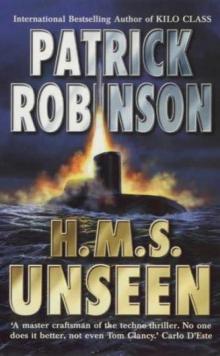 H.M.S. Unseen am-3
H.M.S. Unseen am-3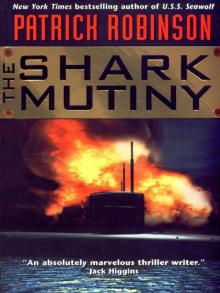 The Shark Mutiny (2001)
The Shark Mutiny (2001)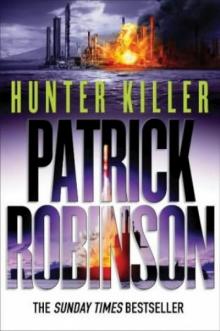 Hunter Killer am-8
Hunter Killer am-8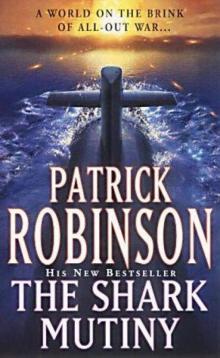 The Shark Mutiny am-5
The Shark Mutiny am-5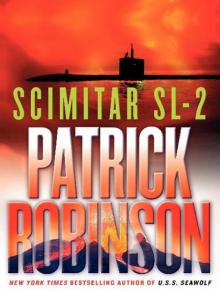 Scimitar SL-2
Scimitar SL-2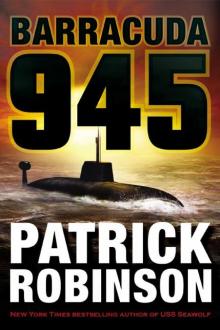 Barracuda 945 am-6
Barracuda 945 am-6 Hunter Killer
Hunter Killer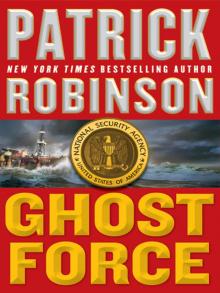 Ghost Force
Ghost Force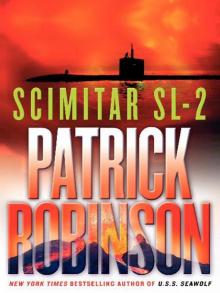 Scimitar SL-2 (2004)
Scimitar SL-2 (2004) Kilo Class am-2
Kilo Class am-2 The Lion of Sabray
The Lion of Sabray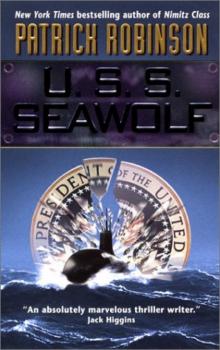 U.S.S. Seawolf am-4
U.S.S. Seawolf am-4 Ghost Force am-9
Ghost Force am-9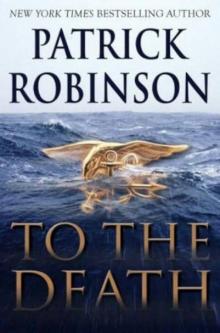 To the Death am-10
To the Death am-10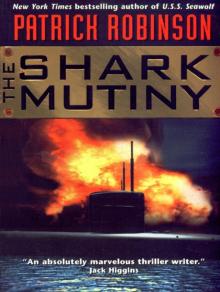 The Shark Mutiny
The Shark Mutiny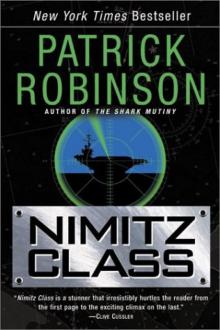 Nimitz Class am-1
Nimitz Class am-1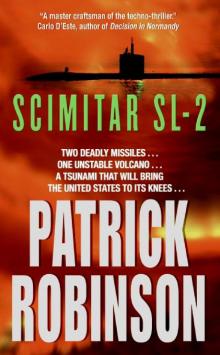 Scimitar SL-2 am-7
Scimitar SL-2 am-7 Barracuda 945
Barracuda 945 Intercept
Intercept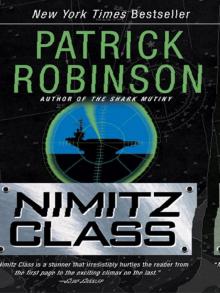 Nimitz Class (1997)
Nimitz Class (1997)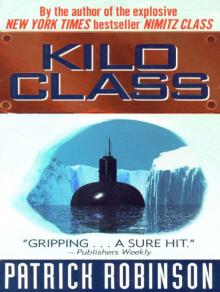 Kilo Class
Kilo Class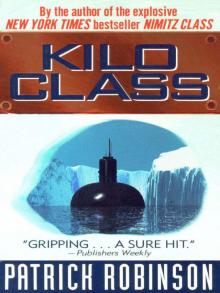 Kilo Class (1998)
Kilo Class (1998) Diamondhead
Diamondhead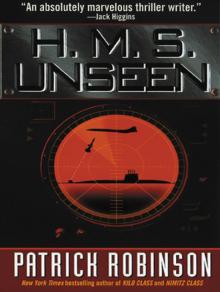 H.M.S. Unseen
H.M.S. Unseen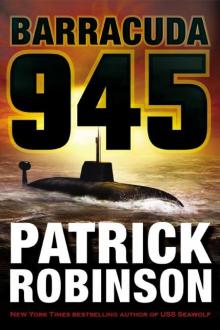 Barracuda 945 (2003)
Barracuda 945 (2003)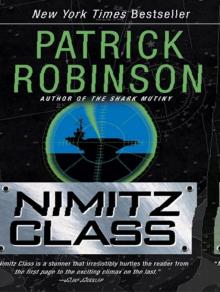 Nimitz Class
Nimitz Class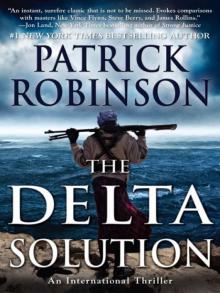 The Delta Solution
The Delta Solution U.S.S. Seawolf
U.S.S. Seawolf